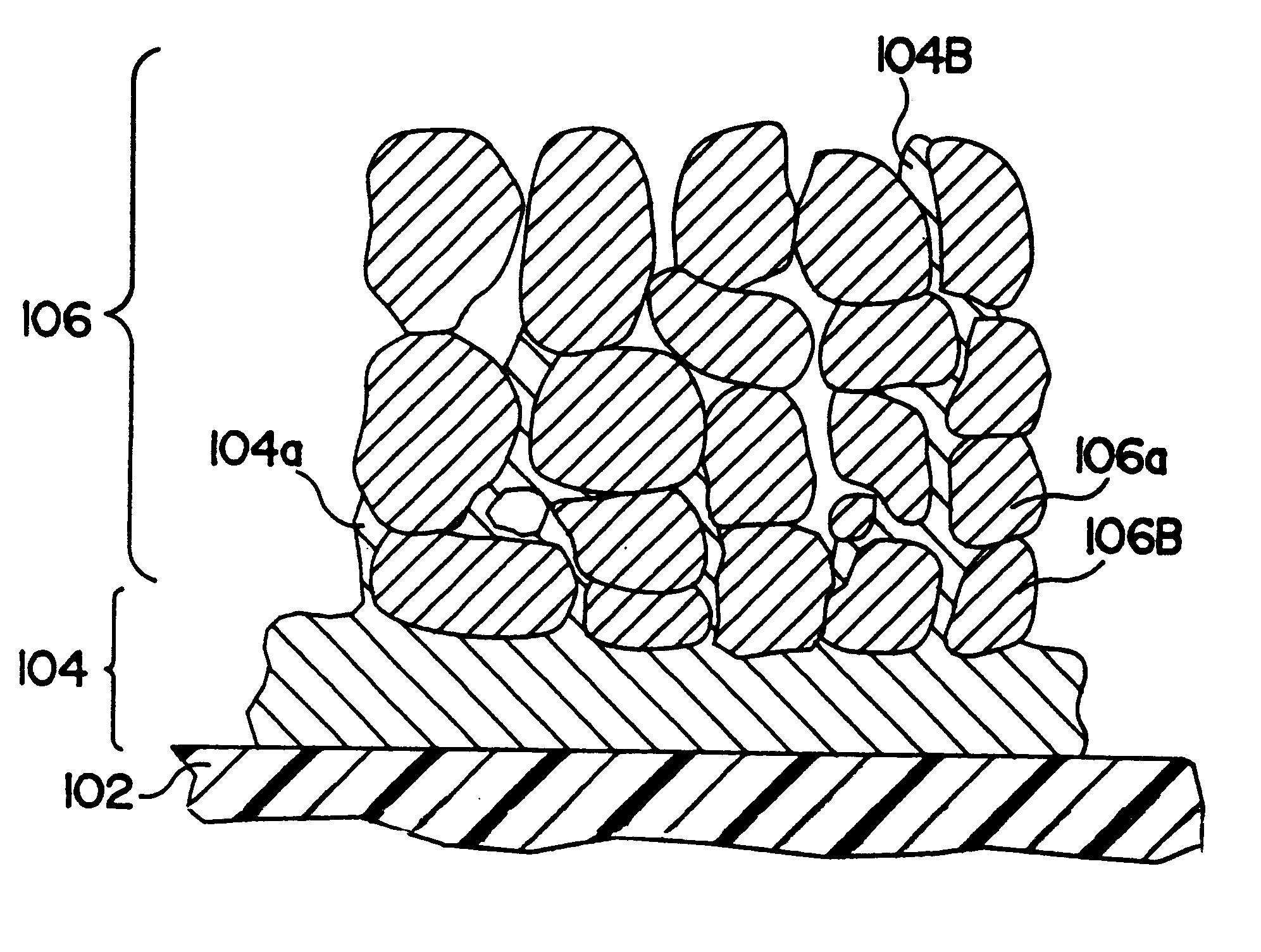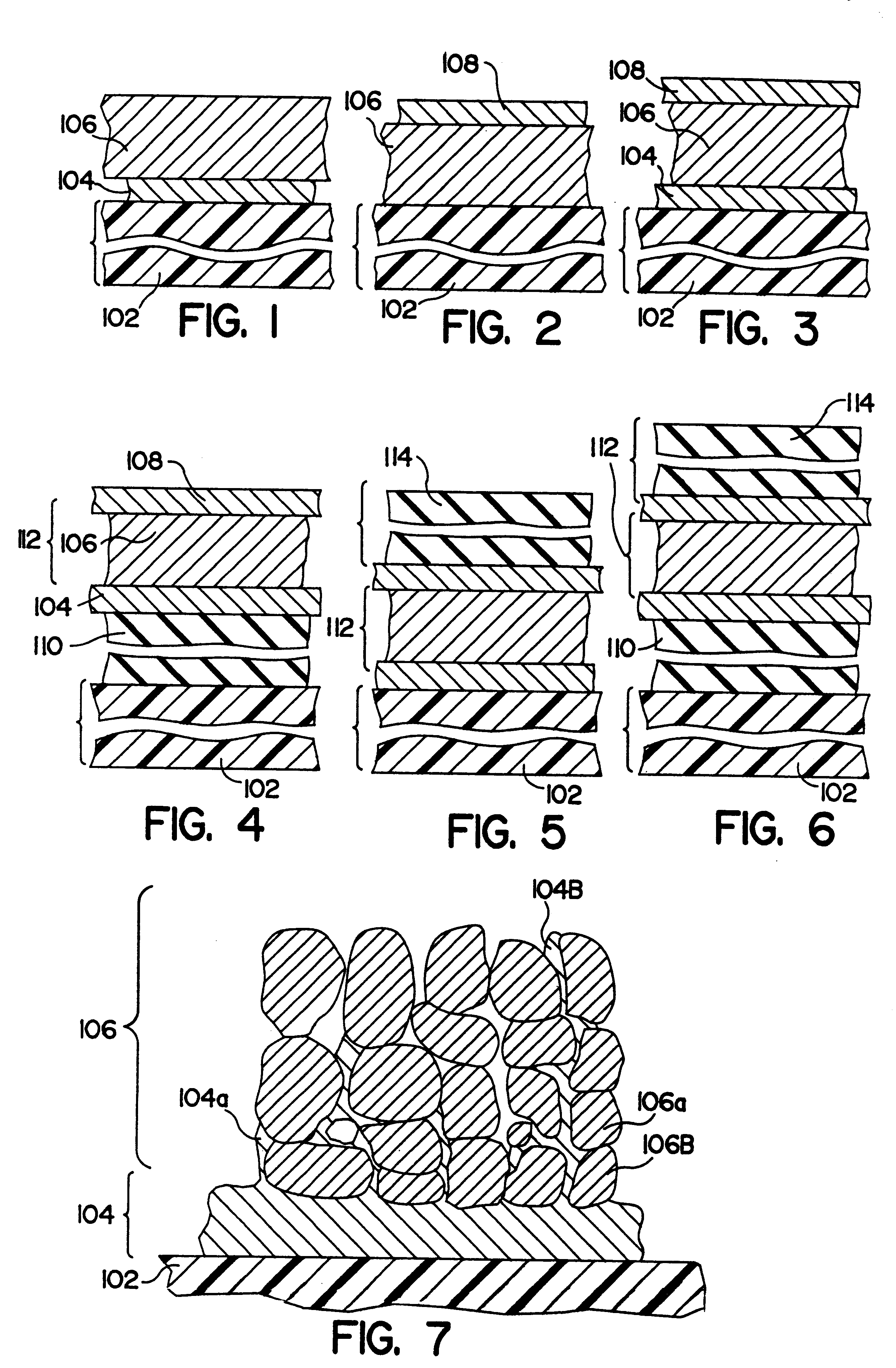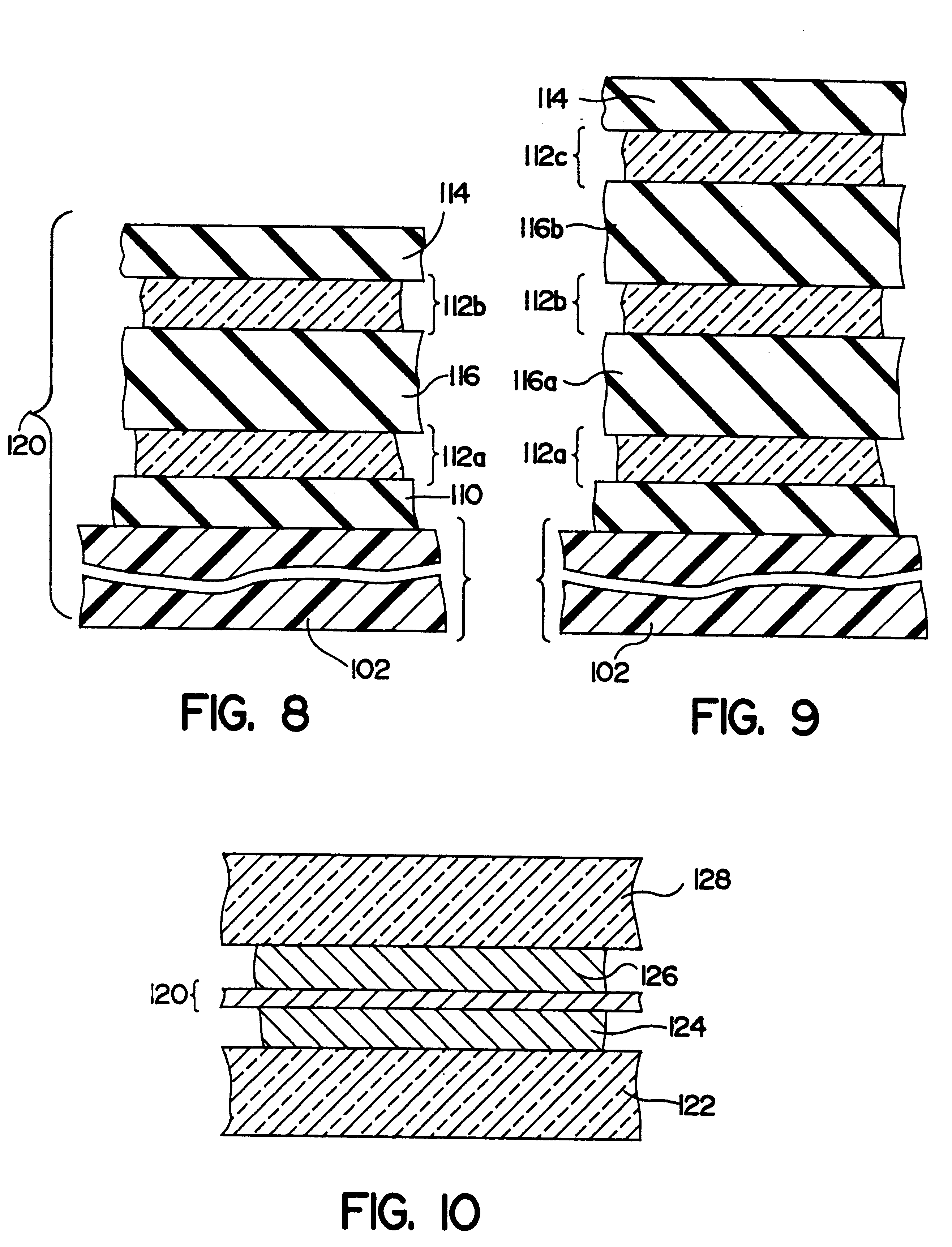Gold-clad-silver-layer-containing films
a technology of silver-layers and films, applied in the field of gold-cladsilver-layer-containing films, can solve the problems of environmental oxidation, decrease in conductivity and transmissivity, inacceptable applications, etc., and achieve the effect of stable and durable and longevity of metallic silver layers
- Summary
- Abstract
- Description
- Claims
- Application Information
AI Technical Summary
Benefits of technology
Problems solved by technology
Method used
Image
Examples
example 1
A series of silver-on-polyethyleneterephthalate films were prepared using the general sputter-depositing preparation process described above. The PET was 2 mil thick AH4400. The first layer in all members of the series was an unchanging boundary layer of indium oxide. Over this boundary layer was deposited a constant thickness (about 100 .ANG. ) layer of silver. In a control run, no gold cladding was added. In five other members of the series, gold cladding was added on top and beneath the silver layer. The amounts of gold in each cladding layer was varied from 1 unit (estimated to be about one fifth to one tenth of a three angstrom monolayer of gold or about 0.3-0.6 .ANG.) to 2 units (X2), to 4 units (X4), to 8 units (X8) and to 16 units (X16). These X2, X4 factors were based on controlling the sputtering conditions in various multiplicative ways which were held constant from experiment to experiment to provide valid bases of comparison. However the actual thicknesses of gold added...
example 2
Following the methods and the nomenclature of Example 1 a "PET / IO / AuX16 / Ag / AuX16" material was prepared.
This sample was prepared for XPS analysis. The bottom and top Au thicknesses were X16 as obtained by sputtering at 0.4 kW through a 3 / 16" slit at a linespeed of 36 mm / sec.
The deposition of silver was held constant at 0.56 kW at a linespeed of 9.50 mm / sec using a 3 / 4" slit. Power / Linespeed=58.9 W sec / mm.
The sample was prepared on 5 mil American Hoeschst 4400.
example 3
Following the methods and the nomenclature of Example 1 a "PET / ITO-50 / AuX32 / Ag" material, where ITO-50 is a 50 / 50 indium-tin oxide, was prepared.
This sample was prepared for XPS analysis. The bottom Au thickness was X32 and was obtained by sputtering at 0.4 kW through a 3 / 16" slit at a linespeed of 18 mm / sec.
The deposition of silver was held constant at 0.54 kW at a linespeed of 9.50 mm / sec using a 3 / 4" slit. Power / Linespeed=56.8 W sec / mm.
The sample was prepared on 5 mil AH4400.
PUM
| Property | Measurement | Unit |
|---|---|---|
| Fraction | aaaaa | aaaaa |
| Percent by mass | aaaaa | aaaaa |
| Transparency | aaaaa | aaaaa |
Abstract
Description
Claims
Application Information
 Login to View More
Login to View More - R&D Engineer
- R&D Manager
- IP Professional
- Industry Leading Data Capabilities
- Powerful AI technology
- Patent DNA Extraction
Browse by: Latest US Patents, China's latest patents, Technical Efficacy Thesaurus, Application Domain, Technology Topic, Popular Technical Reports.
© 2024 PatSnap. All rights reserved.Legal|Privacy policy|Modern Slavery Act Transparency Statement|Sitemap|About US| Contact US: help@patsnap.com










